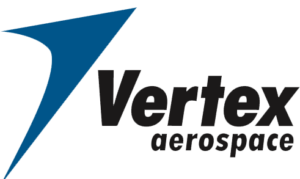Contractor Air Services (CAS) Best Practices for RDT&E Risk Reduction and Accelerating Technology Readiness Levels
Billions of dollars are invested annually by federal agencies and defense contractors to develop and build complex systems for air, land, and sea environments. Effective management of the product development process is an ongoing challenge as a majority of these programs require not only the development of innovative technologies but also their integration into complex systems. To reduce risk in this process, the U.S. Government Accountability Office (GAO) suggests the use of Technology Readiness Assessments (TRA) as a best practice to assess a technology’s maturity.
For over 30 years, TRAs have been leveraged by the U.S. Department of Defense (DoD) and the National Aeronautics and Space Administration (NASA) by using Technology Readiness Levels (TRL) as a key performance indicator for evaluating critical technologies (CTs). On a scale of one to nine, many companies are able to complete basic research and work up to TRL 4 but often cannot advance past this level for various reasons. Some of these include not having the platform to fully demonstrate the technology or the high level of cost that comes with gaining access to conventional flight assets. This ultimately limits innovation since a complete system cannot be developed. Additionally, GAO has found when TRAs are not implemented, unrealistic assumptions regarding the maturing of a technology is made leading to cost increases and schedule delays.
Companies like Vertex Aerospace allow its customers to validate a product and move it up to TRL 8 by providing reliable platforms to demonstrate the product in real, relevant, and operational airborne environments. Vertex’s Flight International business area is an established Contractor Air Services (CAS) leader that owns and operates a fleet of specially modified Learjet aircraft. Eric Theisen, Vertex’s Special Missions Program Manager and Learjet Captain, said, “Assessing how far a program’s CTs have matured and further demonstrating its fidelity of simulation and training in the intended operational environment are imperative in evaluating its readiness for product development and system integration.” Theisen goes on to say, “Vertex’s support of DoD activities for over 35 years combined with a fleet of Learjet that have been fully equipped with special mission power systems, internal racks, and wing hard points offers affordable solutions necessary to increase and validate technology readiness levels.”
Vertex’s Flight International business area operates from two CONUS locations in support of the U.S. Navy’s Atlantic and Pacific fleets and offers worldwide deployment. The Newport News, Virginia facility serves aircraft carriers, amphibious assault ships, destroyers, and naval air forces based at Norfolk Naval base, Oceana Naval Air Station, and other units homeported along the East Coast. “Our proximity to Naval Air Station Patuxent River is ideal for supporting Naval Air Systems Command test and evaluation projects,” said Theisen. To serve the Pacific Fleet, Flight International maintains a four aircraft detachment at Naval Air Station North Island in San Diego, California. Since Flight International holds worldwide landing permits with the DoD, the company can land at any of its bases no matter the service.
In addition to operational missions, Flight International’s highly skilled pilots fly in support of airborne electronic warfare operations, Air Intercept Controller training, target and banner tow training, and electronic countermeasures testing for training of aircrews and shipboard personnel. The under wing hard point modifications on all Flight International Learjets fortifies the aircraft to carry payloads weighing up to 1,000 pounds. Threat simulation and jamming for tracking exercises are provided with a variety of threat and jamming pods, including variants of the AST-6, AST-9, ALQ-167, ALQ-188, ALE-43, and the P5 Tactical Combat Training System (TCTS) pod. “Whether the mission requires real-time simulations or live monitoring functions of air-to-air, air-to-ground, or surface-to-air combat training, Flight International is committed to providing realistic training for real world threats,” said Theisen.
Theisen says with a 50 percent Veteran employee rate, Vertex Aerospace understands the complexities of defense operations and makes safe, cost-effective solutions its priority. Finding the right partner who prioritizes technology readiness can help identify concerns allowing program managers to address potential risks as programs move through the entire RTD&E process,” said Theisen. “This ultimately helps officials hold government programs accountable for achieving technology performance goals and can also lead to cost savings.” More information about Vertex Aerospace’s Flight International business area can be found at vtxaero.com/flight.
Eric Theisen Bio
Eric Theisen, Vertex Aerospace’s Special Missions Program Manager and Learjet Captain, is responsible for maintaining proficiency of customer missions and staying up-to-date on current military tactics and training. He leads the coordination of RDT&E missions for Flight International. Prior to joining the Vertex team, Theisen worked for NASA at the Langley Research Center as Strategic Integration Lead. In addition to his strategic flight experience, Theisen served 30 years in the United States Air Force accumulating over 7,000 hours in various aircraft, including the B-52, F-15, C-23, F-16, and the B-2. Along with flight duties, he held various command and staff positions and retired as the Chief of the Advanced Programs Division at Air Combat Command Headquarters.
